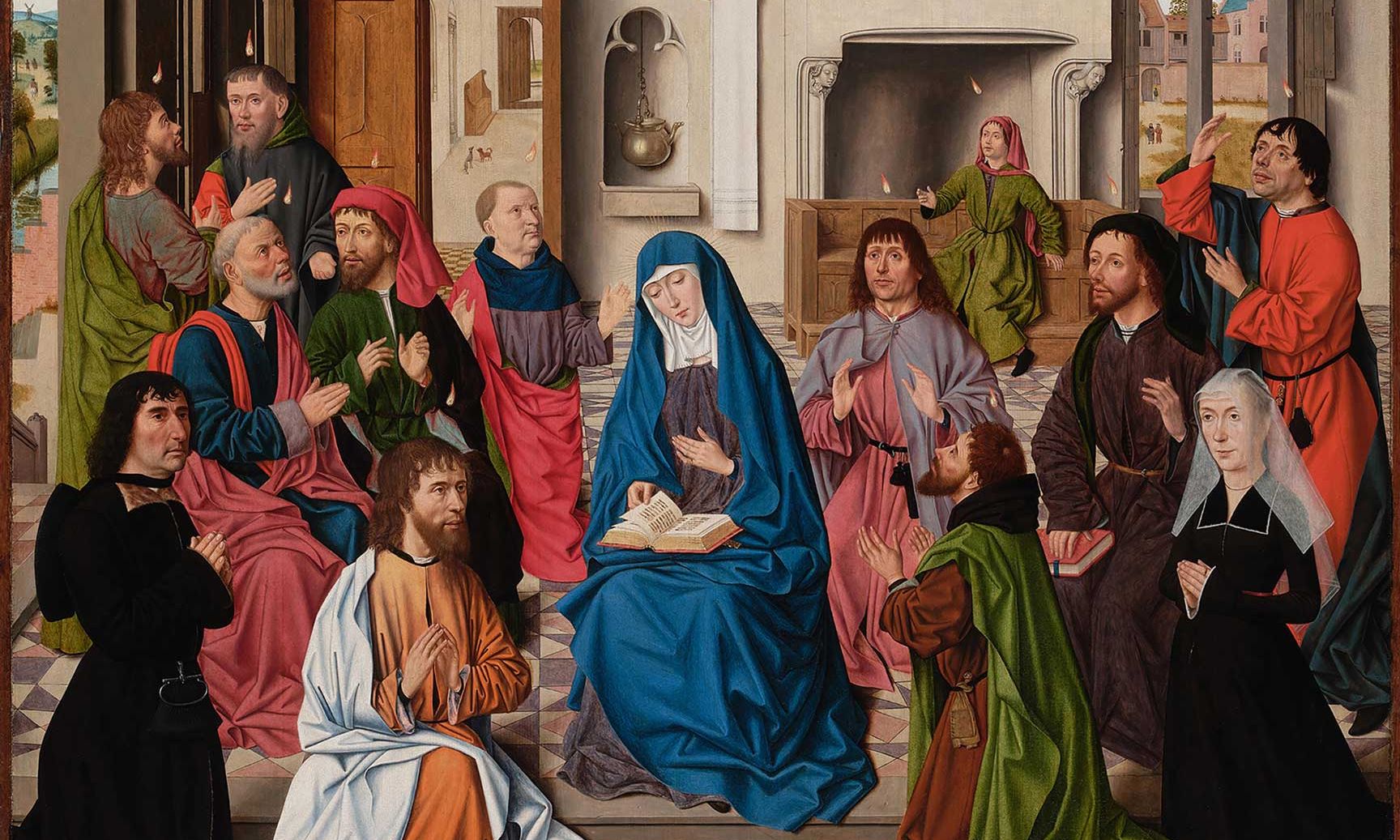Courtesy Sotheby’s
The Master of the Baroncelli Portraits, Pentecost (around 1490)
Old Master & 19th-century paintings evening auction, Sotheby’s, London, 5 July
Estimate £7m-£10m
The Master of the Baroncelli portraits, an anonymous painter active in Bruges in the late 15th century, painted only four known works, and this 106cm x 122cm oil on panel is one of the largest. The artist takes his moniker from the double portrait he painted in around 1490 of Pierantonio Bandini-Baroncelli and his wife Maria Bonciani (members of a wealthy Italian banking family), which now hangs in the Uffizi in Florence. The panel appearing for sale at Sotheby’s is best known as The Rapaert Pentecost, due to it having spent more than three centuries in the collection of the Rapaert de Grass family in Bruges. It has changed hands only three times in the 400-plus years since it was painted, and the last was in 2010, when a member of the Weissenbruch family of Brussels sold it at Christie’s in London for £4.1m (with fees) to the current vendor. The panel has spent the past decade on loan to the Groeningemuseum in Bruges.
Damien Perronnet/Art Digital Studio
Félix Vallotton, Baigneurs à Dieppe (1903)
Collection of Sir Peter Ustinov, Sotheby’s, Paris, 6 July
Estimate: €500,000-€700,000
Never-before seen at auction, this Vallotton seascape used to hang in the Paris hôtel particulier of the British actor, writer and film-maker Peter Ustinov. It was acquired by Ustinov in the 1960s from a gallery in Lausanne, run by the artist’s grandson, and now comes to the block from Ustinov’s collection, consigned to Sotheby’s by his children. The work dates to just a few years after Vallotton’s Les Nabis period—an early Modernist artistic group influenced by Japanese woodblocks—from which his most sought-after work comes, according to Sotheby’s France vice president Aurélie Vandervoorde: “With Vallotton, just a few years makes a huge difference”. Vallotton’s $3.4m auction record was made in 2016 at Sotheby’s Zurich for a 1890s Nabi-period painting, Nonetheless, Vandervoorde points out that the work still draws “a lot of inspiration” from Les Nabis, and can be seen as something of a bridge between this period and Vallotton’s later, more realistic style. She also notes that the work comes a few years after the artist discovered photography, which undoubtedly shaped the work’s “unusual and extremely modern” composition, in which figures cluster into one corner, leaving angular expanses of sea and sky. Vandervoorde adds that of all the works from the Ustinov sale, this one most clearly epitomises his taste—which was “very intellectual” and emblematic of his second home, Switzerland, where the “largest collectors of the Swiss Vallotton are and always have been”.
Courtesy Christie’s
Fra Angelico, The Crucifixion, with the Virgin, St John the Baptist and the Magdalen (around 1395-1455)
Old Master paintings evening sale, Christie’s, London, 6 July
Estimate: £4m-£6m
Autograph works by Fra Angelico at auction are rare as hen’s teeth—only two are recorded this century: a small panel, which sold at Christie’s in New York last year for $4.7m (with fees), and a slightly larger one, which sold in Italy in 2003 for $1.2m (with fees). But Christie’s is offering a gold-ground crucifixion scene that was rediscovered as a work by the Florentine artist by Francis Russell, Christie’s UK deputy chairman. The work had previously been ascribed to Lorenzo Monaco, in whose workshop Fra Angelico is thought to have trained. The panel is believed to have been acquired by William Bingham Baring, 2nd Lord Ashburton, in the 18th century. It is not currently guaranteed and, Russell says, will not be available for guarantee.

